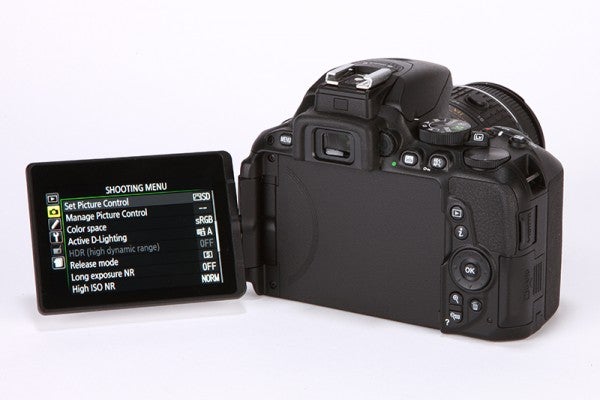Nikon D5500 Review - The Nikon D5500 builds on the success of its D5300 predecessor with the addition of a new touchscreen and tweaked design, amongst several other enhancements.
Nikon D5500 Review
Nikon D5500 Review – Design
As well as offering a more tactile experience when it comes to reviewing images captured with the D5500, the new touchscreen also sees a slight modification on how the camera is operated.
Previously the ‘i’ button was housed on the camera’s top plate, however it is now moved on to rear of the camera just above the d-pad. This not only makes it easier to reach when shooting, but also places it alongside the touchscreen.
This is convenient as the touchscreen allows for alteration of a host of the camera’s shooting settings, with a simple tap on the setting to select and then tap in another location of the screen to modify.
While this is not only convenient for those familiar with touchscreen technology, it’s also important for general users as the D5500 is somewhat lacking in physical control, perhaps owing to the camera’s entry-level status.
Controls
It’s not just standard camera setting adjustments which can be modified through the LCD screen, as the D5500 also offers a range of custom adjustments which can be assigned by the user.
For example, it’s possible to adjust the camera’s ISO sensitivity by sliding your finger across the LCD screen while shooting through the viewfinder.
In terms of the general build of the camera, the D5500 features a new construction – out goes the polycarbonate exoskeleton and metal chassis, replaced by a new single shell comprised of thermoplastic reinforced with carbon fibre.
The benefits of this shell are mostly size based, with the D5500 measuring in smaller than the D5300 and also 60g lighter while still maintaining the solid structural integrity of its predecessor.
Despite being physically smaller, Nikon has enhanced the design of the D5500 by giving it a larger and more pronounced handgrip in a style more akin to the acclaimed D750. As a result of this handgrip the model fits much better in the hand and gives a much more solid grip when carrying with a large lens attached.






